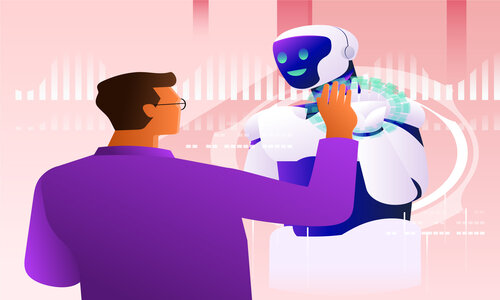


When hospitals begin to listen without asking, patients begin to heal without worrying.
Doctors begin to focus without multitasking.
magine walking into a hospital room that adjusts the lighting to your mood, monitors your vitals without attaching wires, alerts the nurse if you’re struggling to breathe — all without you having to press a button or say a word.
Welcome to the future of healthcare: Ambient Intelligence.
While digital health innovations have transformed patient data management and diagnostics, the next leap is more subtle yet more powerful — hospitals that “listen” passively, act proactively, and care intelligently. This is where ambient intelligence in healthcare steps in.
What Is Ambient Intelligence in Healthcare?
Ambient Intelligence (AmI) refers to digital environments equipped with sensors, AI, and contextual awareness that enable them to sense, interpret, and respond to human needs seamlessly and often invisibly.
In healthcare, this means hospital rooms, ICUs, and even homes that can:
It’s not just smart—it’s aware.
The Problem: Healthcare Is Still Too Reactive
Despite EMRs, wearables, and IoT devices, healthcare delivery is still largely manual and reactive:
This results in:
Ambient intelligence is designed to proactively detect, predict, and act, often without human prompting.
Real-Life Applications of Ambient Intelligence in Healthcare
1. Fall Detection & Prevention
Smart sensors and computer vision systems detect abnormal movement patterns — like a patient trying to get out of bed alone — and alert staff in real-time, reducing fall incidents significantly.
2. Hands-Free Clinical Documentation
Voice-based ambient solutions like Nuance DAX listen to doctor-patient conversations, extract structured data, and update EHRs — reducing screen time and cognitive load.
3. Post-Surgical Monitoring
Instead of manually checking vitals every hour, ambient systems monitor oxygen levels, heart rate, and even facial expressions continuously, triggering alerts for early signs of deterioration.
4. Infection Control Compliance
Cameras and motion sensors track whether clinicians follow hand hygiene protocols, enabling hospitals to improve safety without additional supervision.
5. Smart Patient Rooms
Patients with limited mobility can control lights, temperature, or call nurses via voice, gestures, or even subtle motion, improving comfort and accessibility.
How It Works: The Tech Behind the Scenes
Ambient intelligence in healthcare combines:
What sets AmI apart is its multimodal awareness — it can process data from voice, images, movement, environment, and clinical inputs together.
What About Privacy and Compliance?
Understandably, the idea of a hospital room that’s always “watching” raises concerns.
That’s why modern ambient systems are designed with:
Trust is built by making this intelligence invisible but responsible.
Final Thoughts: Healthcare That Feels Human Again
Ambient intelligence in healthcare isn’t just about high-tech sensors or AI in the background — it’s about bringing presence, proactivity, and empathy back into patient care.
The rise of ambient intelligence is not about replacing humans — it’s about amplifying their ability to care.
